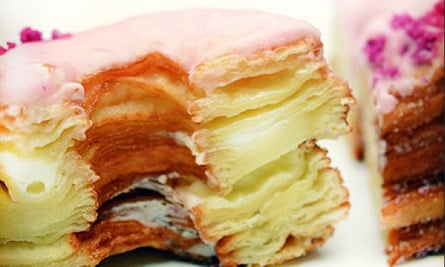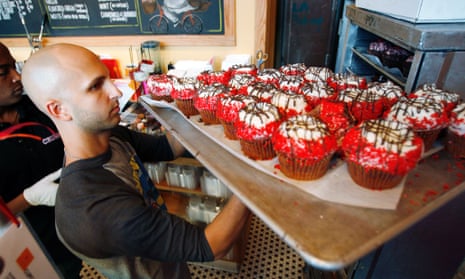The cupcake economy appears to have gone stale. Crumbs, one of the largest chains of US cupcake companies, closed its doors on Monday and may have to file for bankruptcy. And experts predict it may not be the last.
The mini-cake treats were one of the few growth businesses during the recession. Even being highlighted in 2010 as a major factor in job growth in the New York by Barbara Byrne Denham, chief economist at real-estate services firm Eastern Consolidated, who warned presciently: “This could be a fad, or not.”
A cheap indulgence in a time of austerity, cupcakes became an international phenomenon with US chains such as Crumbs and Magnolia Bakery eyeing international expansion. Crumbs went public in 2011 and was soon trading at $13 a share. After several years of losses – it lost $18.2m last year – the share price collapsed and on 1 July, the Nasdaq stock exchange suspended its shares. Staff at its 48 stores in 10 states have now been sent home while the company reviews its options.
Others chains – including Magnolia, made famous by being featured in Sex and the City – continue to expand. Sara Gramling, a spokeswoman for Magnolia, said its bakery continued to be “very successful” and offered a far wider selection than cupcakes. “We’ve been opening new stores very carefully and thoughtfully,” she said. But while a winner may emerge from the cupcake wars, some experts fear Crumbs failure may highlight a larger issue for the market.
Few people know America’s eating habits as well as Harry Balzer, chief industry analyst at research firm NPD Group, who has been compiling an Annual Report on Eating Patterns in America since the 1980s. According to him, Crumbs had a cake problem.
In February, Balzer’s research found 8% of Americans ate a cupcake at least once in two weeks. That’s an all time high. But cupcakes, he said, are a subcategory of cake and total cake consumption has been slowly declining for decades.
“Forty two percent of Americans will eat some kind of cake in the next two weeks,” said Balzer. “Cupcakes have tapped into that market. We love to try something new, especially when it’s a variation on a food we already know.”
The idea of a small, individualised cake available in a panoply of flavours was very appealing to consumers, said Balzer. “Novelty is a powerful tool. It gets you in the door,” he said. “But once we get over the novelty, they need to make life easier or cheaper.”
Cupcakes have so far done neither. Nor do they have the healthy image of the fastest growing snack market – yoghurt. Instead they are squarely stuck in cakeland – a big market, but one that is not getting any bigger.
Novelty has moved on, said Darren Tristano, executive vice-president at Technomic Inc, a Chicago research and consulting firm that specializes in the food industry. Crumbs' issues were of its own making but also represent a wider threat to the cupcake economy, he said. “We’ve always viewed cupcakes as a fad,” he said. “Quite frankly the millennial customer is looking for the next and the new,” he said. Cupcakes just don’t cut it anymore.

At the experimental end there’s a new wave of sweet snacks including New York chef Dominique Ansel’s infamous Cronut, a half croissant, half donut, (which Crumbs, and many others, have tried to emulate); Chicago Waffle’s the Wonut, half donut, half waffle; and Bea’s of Bloomsbury’s Townie, half tart, half brownie. Even people who can’t stand in line for three hours to get a Cronut can read about them or buy a copycat. The new treats make cupcakes look a little stale. Then in the mass market, Starbucks is taking cupcake share with its cake pops and, again, said Tristano, there’s yoghurt, the killer snack.
“Consumers have a lot of choices, including places to get cupcakes,” said Tristano. Rising rents, a flat market and increasing competition mean that Crumbs may not be the only chain to run into trouble.
He compared the rise and fall of cupcakes to Krispy Kreme, the venerable doughnut chain that became a food sensation in the early 2000s attracting celebrity endorsements from unlikely doughnut eaters including Madonna and Beyonce. Rapid expansion and an accounting scandal brought the company to its knees. It has since recovered but is not the faddish food fave it once was.
The cupcake is far from dead, said Balzer. Eight percent of 314m people (the US population) is still a lot of people. But it’s not enough to support several large chains specialising in selling them. “Novelty is a double-edged sword,” he said.

Comments (…)
Sign in or create your Guardian account to join the discussion